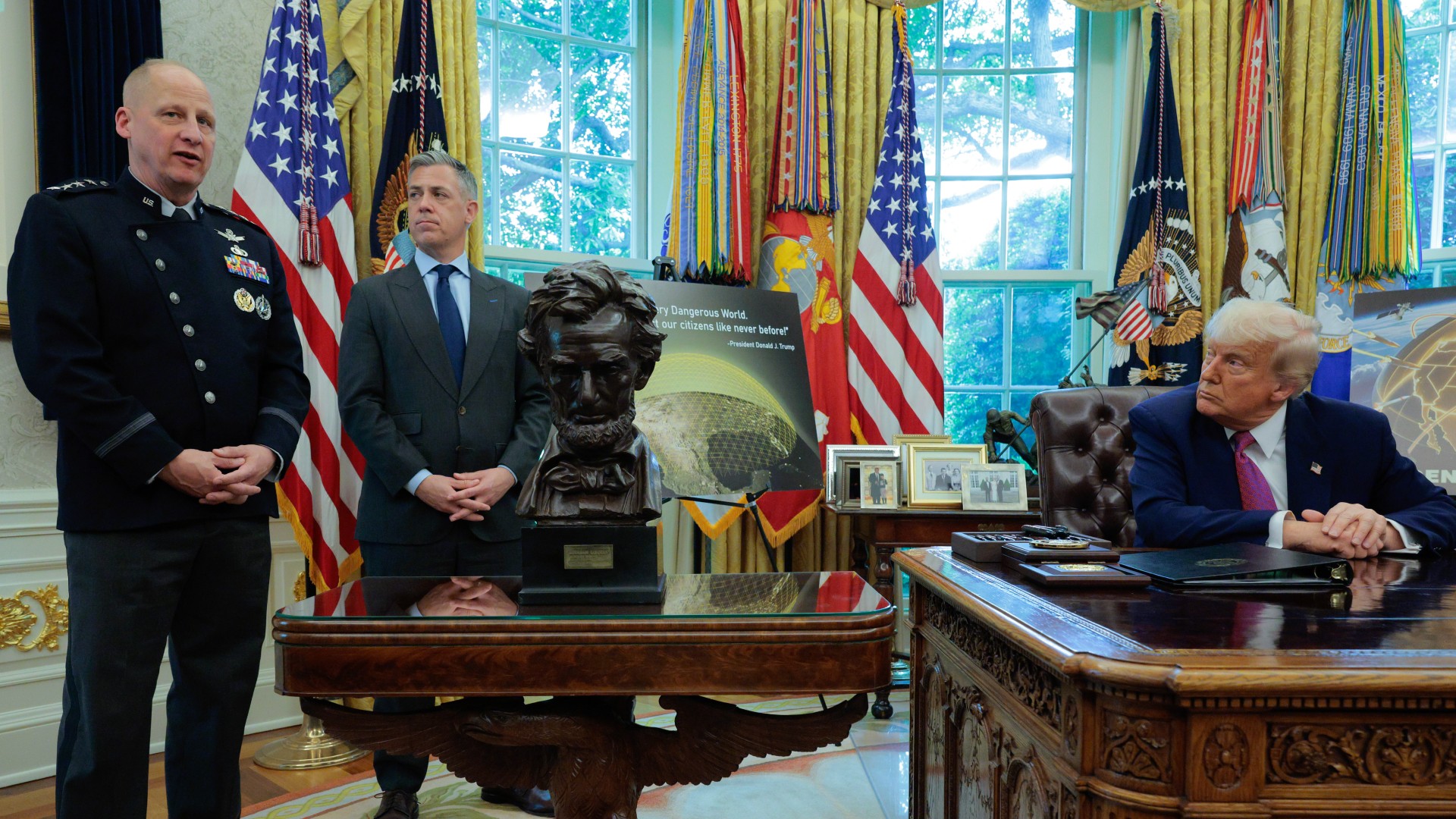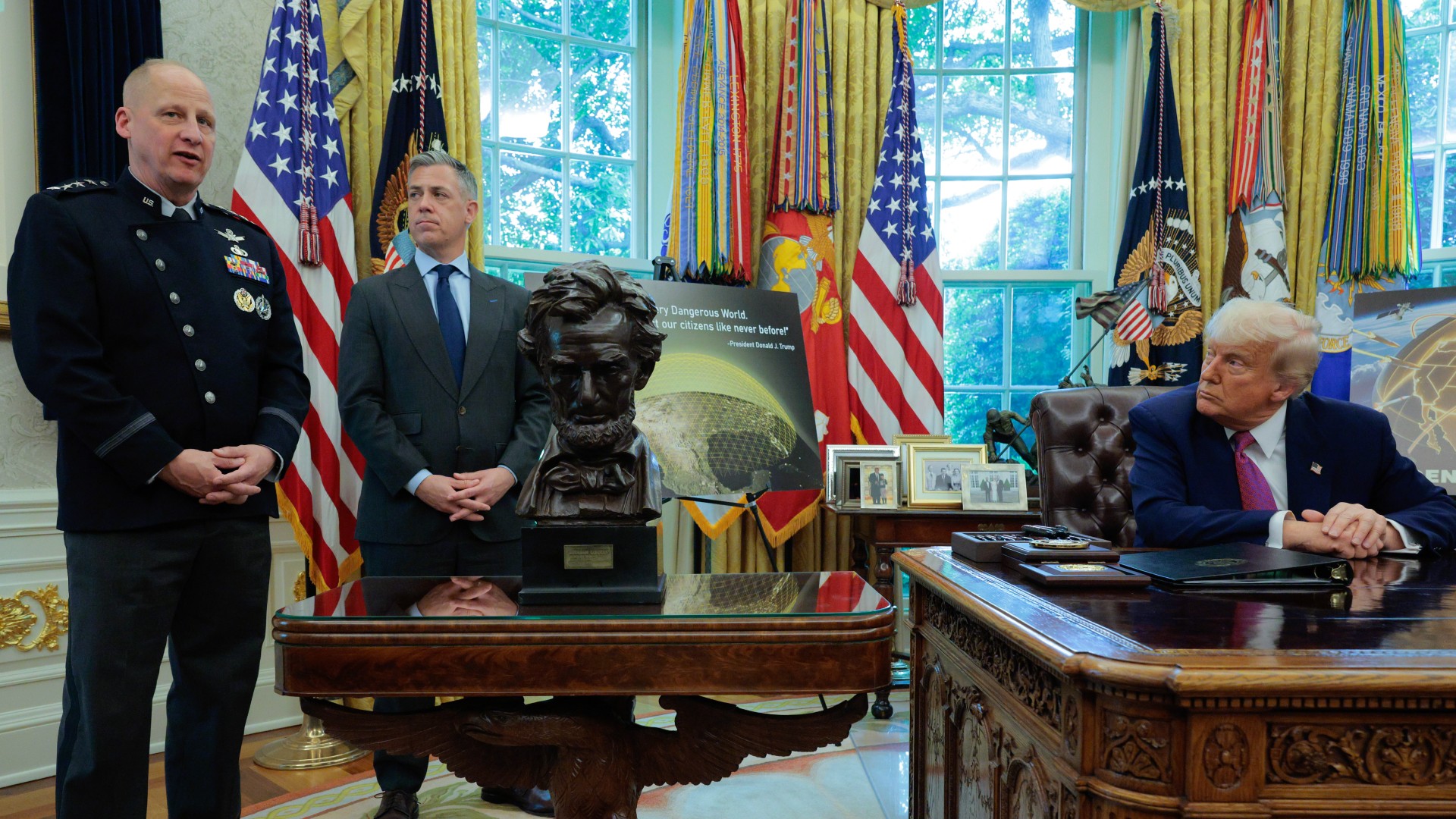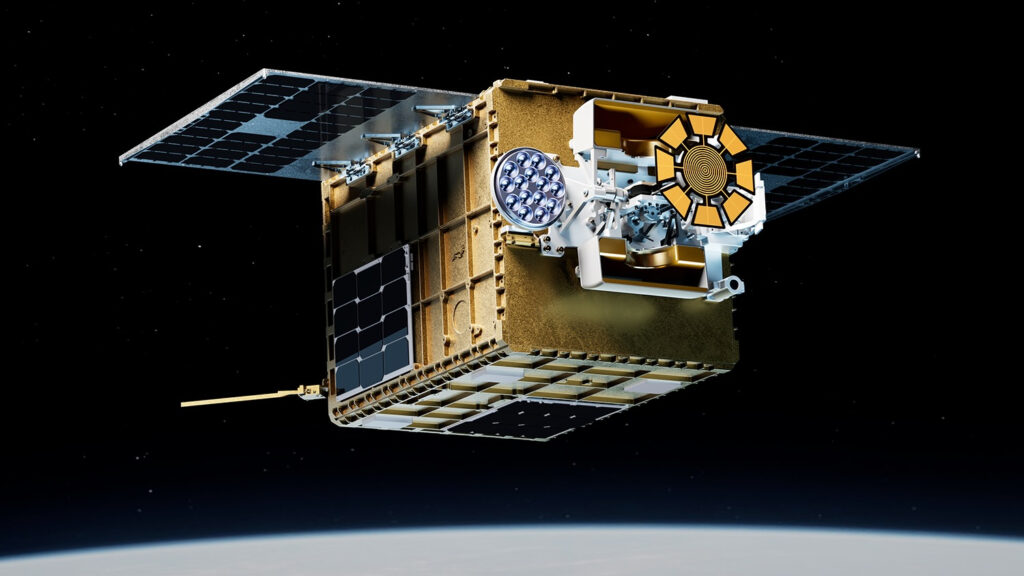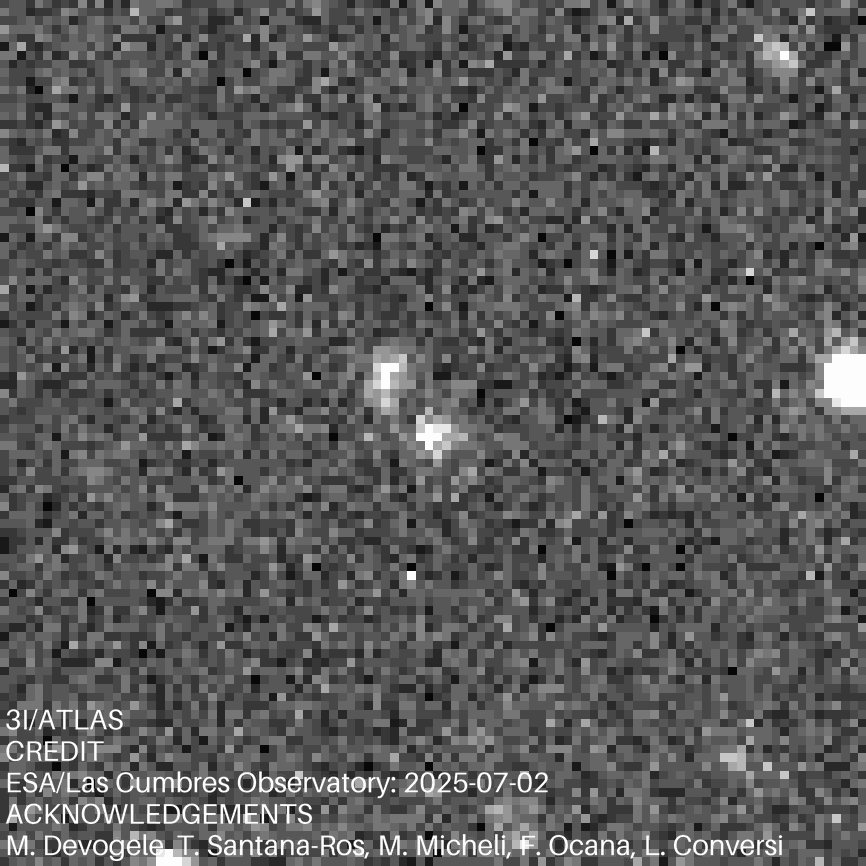Now Reading: Space Force’s Golden Dome chief says space-based missile interceptors are possible today. ‘We have proven every element of the physics’
-
01
Space Force’s Golden Dome chief says space-based missile interceptors are possible today. ‘We have proven every element of the physics’
Space Force’s Golden Dome chief says space-based missile interceptors are possible today. ‘We have proven every element of the physics’

The head of the Trump administration’s Golden Dome program says the technologies needed to create an ambitious space-based missile defense system are already in existence.
U.S. Space Force General Michael Guetlein, Vice Chief of Space Operations, was tapped by President Trump to lead the Golden Dome project on May 20 and was confirmed by the U.S. Senate on July 17. His role will be to oversee the development and procurement of technologies for Golden Dome, a planned missile defense system that can shoot down incoming hypersonic, cruise and ballistic missiles from space.
At least, that’s the plan. Such a system has never before been developed or deployed, but has been envisioned as far back as 1983 when President Ronald Reagan introduced a similar idea known as the Strategic Defense Initiative. At the time, Reagan’s was criticized for sounding outlandish, but according to Guetlein, the capabilities needed for such a system are already here. “I firmly believe that the technology that we need to deliver Golden Dome exists today,” Guetlein said during his fireside chat at the Space Foundation’s Innovate Space: Global Economic Summit held on July 22. “It has just never brought been brought to bear on this problem set to protect the homeland, nor has it been brought to bear on this form factor.”
The summit was held at Amazon’s corporate headquarters in Arlington, Virginia.
Guetlein said that while the capabilities of making the imagined ballistic missile system already exist, one major challenge will be changing the organizational culture that exists throughout the U.S. military and its associated contractors to make room for the new idea. “How do I take capabilities that were built in stove pipes for different mission areas, amongst different services, different agencies, bring those together as an integrated architecture?” Guetlein asked the crowd.
The Space Force general described the culture during his time in the U.S. Air Force, saying military leaders were wary of trusting private contractors or telling them sensitive information. But as Space Force turns more to commercial industry for new technologies needed to fight a potential conflict in space, military leaders are rethinking that culture. “Space is too big for the Space Force to go it alone,” Guetlein said.
Other Space Force leaders have made similar comments in recent months. In April 2025, at the Space Foundation’s Space Symposium in Colorado Springs, U.S. Chief of Space Operations General Chance B. Saltzman told attendees the service “must harness the benefits of technological innovation and emerging capabilities if we’re going to be able to out-compete our competitors,” and that, historically, “military success has hinged on support from commercial industry.”

In fact, private aerospace contractors already do appear to be testing technologies that would be required to build a system like Golden Dome. Kathy Warden, CEO of Northrop Grumman, told investors the company is already testing Golden-Dome-related technologies during a quarterly earnings call on July 22, according to The War Zone.
Aside from current capabilities like radar systems and other classified projects, Warden said Golden Dome will “include new innovation, like space-based interceptors, which we’re testing now.”
Such technologies are crucial for the development of a space-based missile defense system like Golden Dome, Guetlein said during the summit this week, but emphasized that several necessary capabilities have already been developed for the project. “I think the real technical challenge will be building of the space-based interceptor. That technology exists, I believe. I believe we have proven every element of the physics, that we can make it work,” Guetlein said.
But that doesn’t mean other challenges don’t remain. “What we have not proven is, first, can I do it economically, and then second, can I do it at scale?” Guetlein added. “Can I build enough satellites to get after the threat? Can I expand the industrial base fast enough to build those satellites? Do I have enough raw materials, et cetera?”
RELATED STORIES:
The U.S. Space Force general also underscored the need for Golden Dome by describing a few of the weapon capabilities that potential adversaries like Russia and China have been developing — capabilities in which the U.S. still lags far behind, according to statements from military leaders in recent years.
China and Russia have been “building hypersonic missiles capable of traveling in excess of 6,000 miles an hour and maneuvering in endgame,” Guetlein said during the summit. “They’ve been building satellites or weapons that look like satellites on launch, fly around the Earth, and it can navigate into any point on the Earth that they want.
“And the list of threats keeps going on.”
Stay Informed With the Latest & Most Important News
Previous Post
Next Post
-
 01From Polymerization-Enabled Folding and Assembly to Chemical Evolution: Key Processes for Emergence of Functional Polymers in the Origin of Life
01From Polymerization-Enabled Folding and Assembly to Chemical Evolution: Key Processes for Emergence of Functional Polymers in the Origin of Life -
 02Panasonic Leica Summilux DG 15mm f/1.7 ASPH review
02Panasonic Leica Summilux DG 15mm f/1.7 ASPH review -
 03How New NASA, India Earth Satellite NISAR Will See Earth
03How New NASA, India Earth Satellite NISAR Will See Earth -
 04And Thus Begins A New Year For Life On Earth
04And Thus Begins A New Year For Life On Earth -
 05Astronomy Activation Ambassadors: A New Era
05Astronomy Activation Ambassadors: A New Era -
06SpaceX launch surge helps set new global launch record in 2024
-
 07Two Black Holes Observed Circling Each Other for the First Time
07Two Black Holes Observed Circling Each Other for the First Time



















